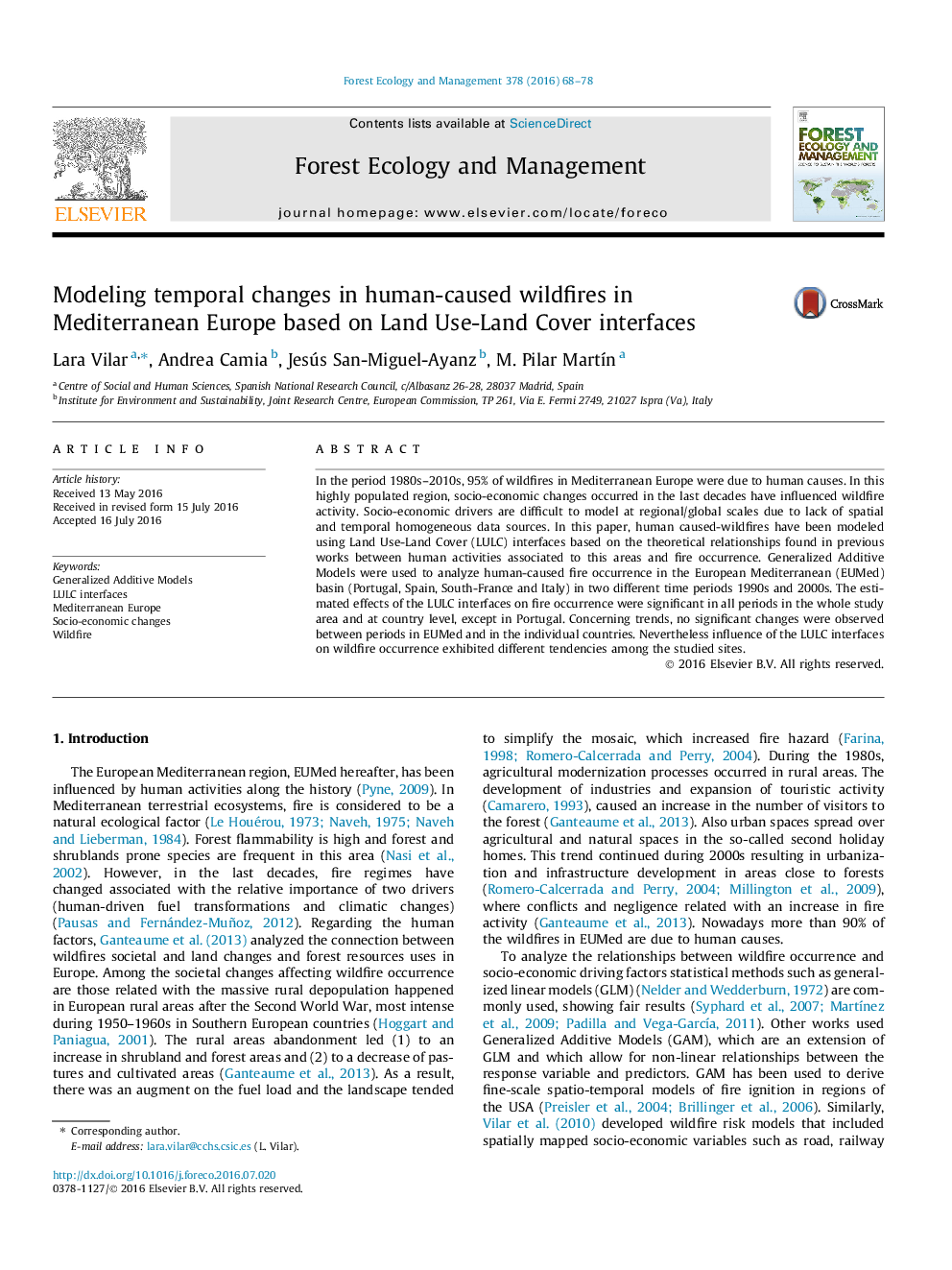| Article ID | Journal | Published Year | Pages | File Type |
|---|---|---|---|---|
| 6542026 | Forest Ecology and Management | 2016 | 11 Pages |
Abstract
In the period 1980s-2010s, 95% of wildfires in Mediterranean Europe were due to human causes. In this highly populated region, socio-economic changes occurred in the last decades have influenced wildfire activity. Socio-economic drivers are difficult to model at regional/global scales due to lack of spatial and temporal homogeneous data sources. In this paper, human caused-wildfires have been modeled using Land Use-Land Cover (LULC) interfaces based on the theoretical relationships found in previous works between human activities associated to this areas and fire occurrence. Generalized Additive Models were used to analyze human-caused fire occurrence in the European Mediterranean (EUMed) basin (Portugal, Spain, South-France and Italy) in two different time periods 1990s and 2000s. The estimated effects of the LULC interfaces on fire occurrence were significant in all periods in the whole study area and at country level, except in Portugal. Concerning trends, no significant changes were observed between periods in EUMed and in the individual countries. Nevertheless influence of the LULC interfaces on wildfire occurrence exhibited different tendencies among the studied sites.
Related Topics
Life Sciences
Agricultural and Biological Sciences
Ecology, Evolution, Behavior and Systematics
Authors
Lara Vilar, Andrea Camia, Jesús San-Miguel-Ayanz, M. Pilar MartÃn,
